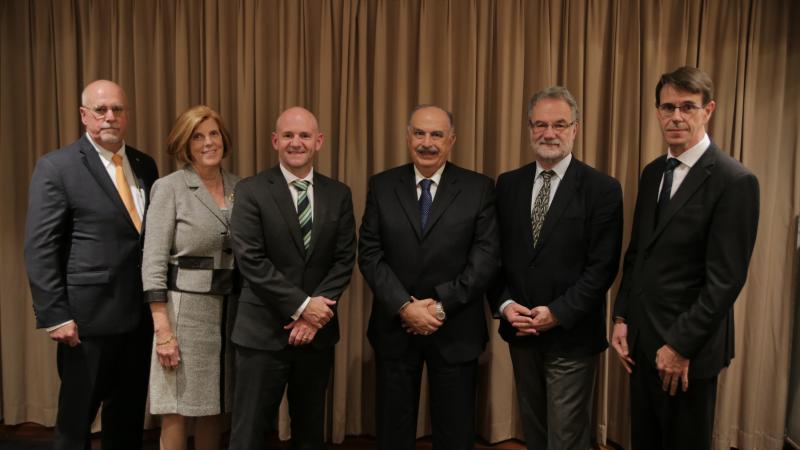Witnessing benefits of wheat improvement research

Researchers participating in the 2015 Borlaug Rust Initiative Workshop and the 9th International Wheat Conference held in Sydney, strongly believe that investment in agriculture can pay big dividends, but not without continued funding and collaboration. Research conducted by the International Maize and Wheat Improvement Center (CIMMYT) and the International Center for Agricultural Research in the Dry Areas (ICARDA) show that CGIAR wheat grain is valued as high as USD 3.8 billion per year, all for an annual investment at a fraction of that price.
Despite the high financial valuation from CGIAR wheat, stable funding is needed to maintain local and national research capabilities and institutional capacities — especially given the growing challenges facing global food security. According to the Food and Agriculture Organization of the United Nations, the world population is expected to grow by 33 percent by 2050 to 9.7 billion and food demand will rise as much as 60 percent according to a recent report by the Taskforce on Extreme Weather and Global Food System Resilience.
Wheat provides 20 percent of calories and 20 percent protein to the global human diet. However, most countries in the Central and West Asia and North Africa (CWANA) Region, with the exception of a few, are not self-sufficient in wheat production, and wheat remains their single most important imported commodity. This is a significant cost to countries. Increasing the competitiveness of domestic wheat production through the adoption of improved crop varieties and more efficient use of natural resources, improving their quality and reducing harvest and post-harvest losses will significantly reduce pressure on treasury finances in these countries.
Among North African countries, Egypt is the largest importer with 9 million tons of wheat imported every year for about USD 1.4 billion or about 6% of the GDP. The demand for wheat is growing at 5.6% and 2.2% per year in Central Asia and North Africa, but the population in CWANA is expected to increase from the current 0.9 billion to 1.4 billion by 2050. The demand for wheat is expected to increase from 164 million tons to 268 million tons.
“This calls for more research and development efforts to increase wheat productivity at the regional and global levels to meet the needs of the population,” said Dr. Michael Baum, Director of ICARDA’s Biodiversity and Integrated Gene Management Program.
Dr. Sanjaya Rajaram, the winner of the World Food Prize in 2014 and retired ICARDA Research Program Director said that wheat production has to increase to one billion metric tons to feed the world’s growing population. Collaboration on wheat research continues to provide high rates of returns on investment. Impacts have helped stabilize food prices at historically low levels, and according to the Proceedings of the National Academy of Sciences, global wheat prices would be as much as 59% higher in 2004 if not for the impact of CGIAR wheat improvement.
Wheat lines from CGIAR are useful for wheat improvement programs around the world. Breeding efforts of the two centers, ICARDA and CIMMYT, have enhanced the genetic diversity of improved wheat, particularly for critical traits such as yield, grain quality, disease resistance and early maturity. The two CGIAR centers are delivering impact through strong partnerships and collaboration on sustainable cropping practices, such as initiatives that improve farmers’ access to quality seed varieties. ICARDA and CIMMYT agreed in 2014 to develop one global wheat program combining expertise in breeding, pathology, seed systems, entomology, conservation agriculture, and others. The two centers also share seed collections of nearly 200,000 unique samples.
